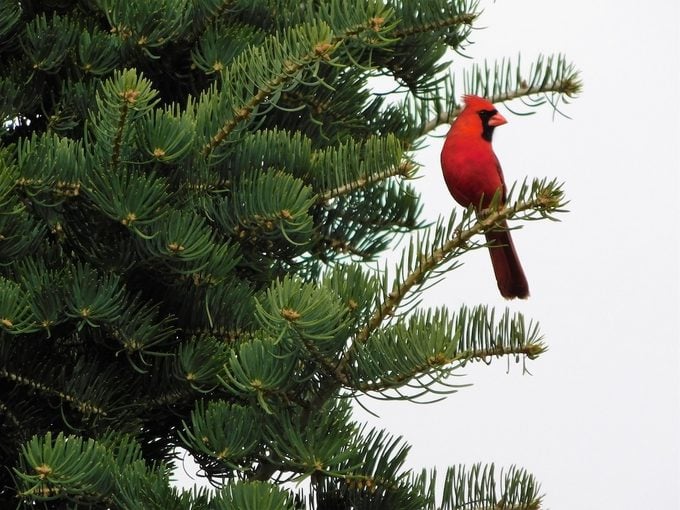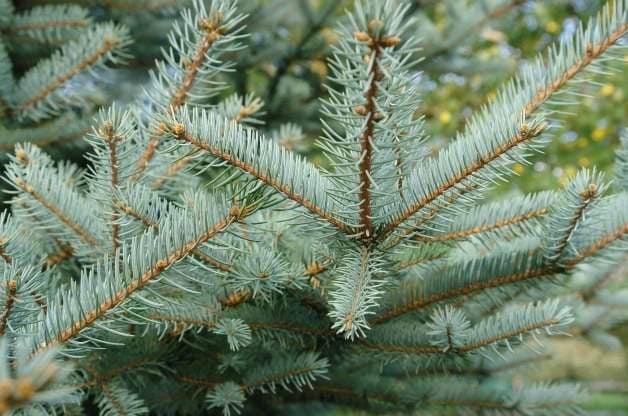The Best Types of Conifer Trees and How to Grow Them
Updated: Nov. 18, 2020
Garden experts share their favorite types of conifer trees as well as the best tips for growing conifers in your backyard.

Conifers—thanks to their striking silhouettes, noteworthy growth habits, remarkable evergreen textures and variety of hues—are “gotta-have-it” landscape additions for today’s gardeners. Thankfully there are many types of conifer trees to choose from.
“People are really getting into conifers,” says landscape designer Geno Neri of Neri Landscaping in St. Charles, Illinois. “Homeowners like conifers for their ease of maintenance and year-round interest. And conifers work well with so many plants. Think of taller conifers as the bones—the exclamation points—of a garden. They give height and look good when nothing else is growing. But then, in spring, summer and fall, the conifers nicely showcase the texture of ornamental grasses, shrub foliage, and flowering annuals and perennials.”
Where to Plant Conifer Trees
Conifers are sure to attract attention no matter how and where you showcase their distinctive silhouettes. They’ll capture passersby’s curiosity as well as draw flocks of nesting birds that seek shelter and food amid their boughs. Depending on their type and size, conifers can be cultivated as specimen plants or as privacy hedges or combined with other conifers in rock gardens and foundation plantings. Their shapely contours make for arresting anchors amid perennial borders, while low-growing conifers with spreading forms stand in as good-looking ground covers.
“Conifers enable the gardener to create a rather amazing landscape,” says Rich Eyre, who, along with his wife, Susan, owns Rich’s Foxwillow Pines, a nursery in Woodstock, Illinois that specializes in dwarf conifers. “Conifers come in just about every color: green, yellow, blue, orange and purple. Some conifers are feathery; others have stiff needles. All conifers bear cones in assorted colors and shapes, with yews and junipers producing fleshy, berry-like cones. Conifers expand your planting palette and enable you to ‘paint’ unique landscapes.
“They can be the four-season skeletal elements of mixed perennial borders,” Rich adds. “Columnar trees add height to a garden but take up little width, leaving room for more plants. Or, since conifers grow in a restricted way, you can place them to tone down or block unwanted views—like a neighbor’s garden shed.”

How to Choose and Plant Conifer Trees
Before you head to the nursery, it’s important to measure your planting sites, check your landscape for items you wish to block or spotlight. Then do a little research to determine which conifer types best suit your needs. Most conifers require well-drained soil in full sun. But a few, such as yews, arborvitae and hemlocks will tolerate shady sites.
“When buying conifers, always consider where you’re going to be using them, the plant’s light requirements and its size at maturity,” says Geno. “You don’t want to have to move a conifer if it gets too big for its designated spot.”
Geno also suggests purchasing conifers from reputable nurseries and growers in your area. They’ll carry plants that are best suited to your growing zone. In autumn, you can plant conifers as long as you can work the soil, but be sure to allow the plants enough time to establish roots before the soil freezes. Dig planting holes about 6 to 12 inches wider than the root-ball and deep enough so that the top of the root-ball sits even with or about an inch above the ground. Place the conifer in the hole, fill with existing soil and water well.
“Remember to plant conifers with companions that have the same water and light requirements. Evergreens don’t need a lot of water, so you don’t want to plant them with hydrangeas or other moisture-loving plants,” says Geno. “Mulch around the root area, but keep the mulch away from the trunk. Give them a good watering as they head into winter. Winter’s winds can dry out the plants. Satisfy the plants’ requirements, and you’ll find that conifers are fairly easy to grow!
Best Types of Conifer Trees for Your Landscape
Looking for the right conifer for your backyard? We asked two conifer experts to give us their favorite choices for landscapes.
Rich Eyre of Rich’s Foxwillow Pines Nursery in Woodstock, Illinois, suggests using sun-loving, intermediate conifers, such as Colorado blue spruce (Picea pungens ‘Fastigiata’), Norway Spruce (Picea abies ‘Cupressina’) or white pine (Pinus strobus ‘Fastigiata’), and larger conifers, such as steel blue Colorado spruces (Picea pungens ‘Hoopsii’, ‘Thomsen’, and ‘Glauca Pendula’), to create visual barriers or to draw the eye out into the landscape. For shady spots, try taller cultivars of arborvitae (Thuja), yews (Taxus), or pyramidal hemlocks (Tsuga canadensis) such as ‘Lewis’ or ‘Geneva.’
Geno Neri or Neri Landscaping in St. Charles, Illinois, likes to arrange taller sun-loving junipers, such as the upright ‘Wichita Blue’ (Juniperus scopulorum ‘Wichita’) as a complementary-hued backdrop that allows the purple-leafed weigelia shrubs to shine. He’s also likely to tuck dwarf varieties of arborvitae into rock gardens and arrange spreading junipers as foundation plantings.
More Conifer Choices
Thanks to the wide array of dwarf conifer cultivars, clipped evergreen foundation edgings have given way to house-side groupings comprised of more natural shapes in stair-stepped heights. Try arranging spreading golden Chines junipers, such as Juniperus chinensis ‘Saybrook Gold’, along with a rounded semi-dwarf golden mugo pine (Pinus mugo ‘Aurea’) for a golden glow. Add in a silvery-blue Colorado spruce such as ‘Montgomery’ (Picea pungens ‘Montgomery’), a greenish-blue rounded ‘Blue shag’ Eastern white pine (Pinus strobus ‘Blue Shag’) and earth-hugging blue rug juniper (Juniperus horizontalis) for contrasting colors and forms.
For a high-impact budget-minded entry garden, Eyre suggests combining boulders and dwarf perennials with inexpensive Norway spruce varieties, including Picea abies ‘Pumila’, ‘Repens’ and ‘Elegans,’ that will spread to 3 feet but only reach 2 feet in height in 10 years.
Small columnar conifers that work well as focal points in rock and alpine-type gardens include common junipers (Juniperus communis) such as ‘Pencil Point’ and ‘Compressa’. For areas receiving only 4 to 5 hours of sun, try a pyramidal blue Swiss stone pine such as ‘Glauca’ (Pinus cembra ‘Glauca’) or a dwarf bluish columnar Douglas fir like ‘Fastigiata’ (Pseudotsuga menziesii ‘Fastigiata’).
Stop strolling-by neighbors in their tracks by planting dramatically draped conifers that feature weeping growth habits. Trailing evergreen boughs, cascading downward from the trunk, make conifers such as Picea abies ‘Pendula’ and ‘Frohburg’ and Picea pungens ‘Glauca Pendula’ sensational specimen plants.
Next, check out the types of Christmas trees you can grow.